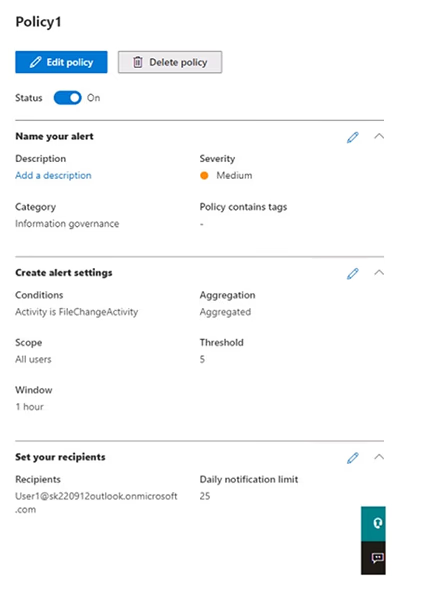You have a Microsoft 365 tenant that contains two users named User1 and User2.
You create the alert policy shown in the following exhibit.

User2 runs a script that modifies a file in a Microsoft SharePoint library once every four minutes and runs for a period of two hours.
How many alerts will User1 receive?